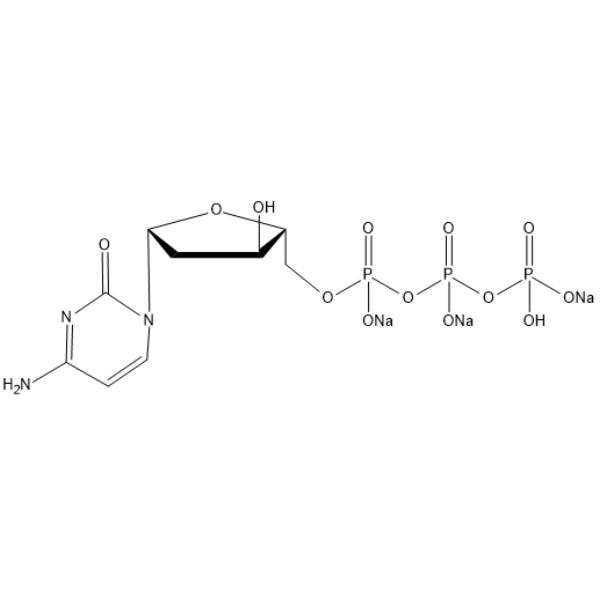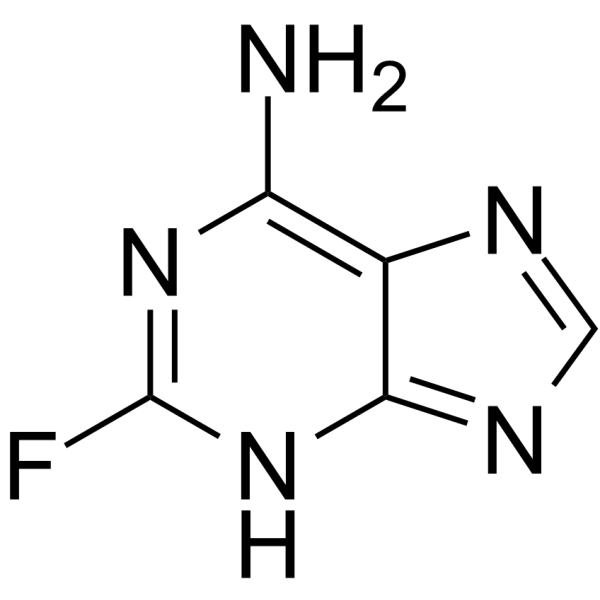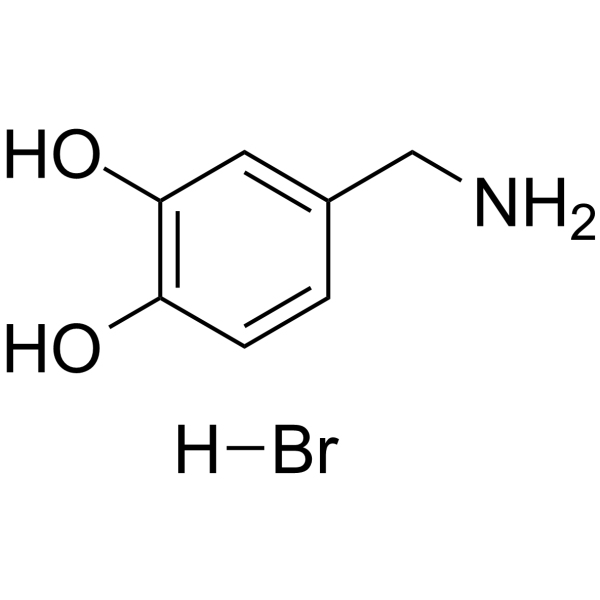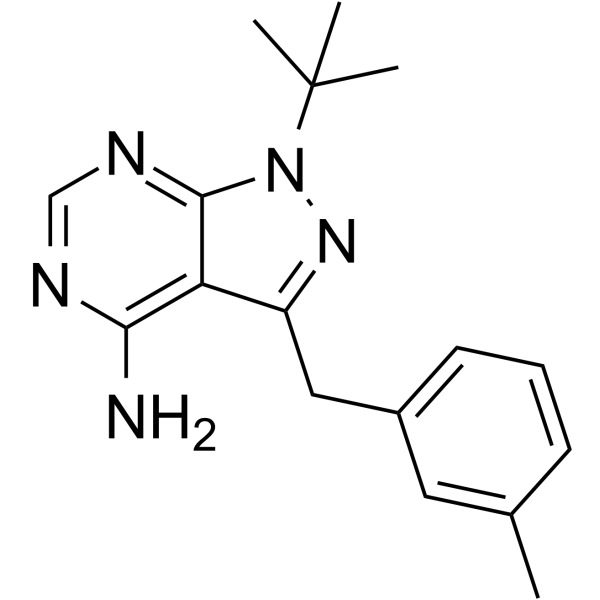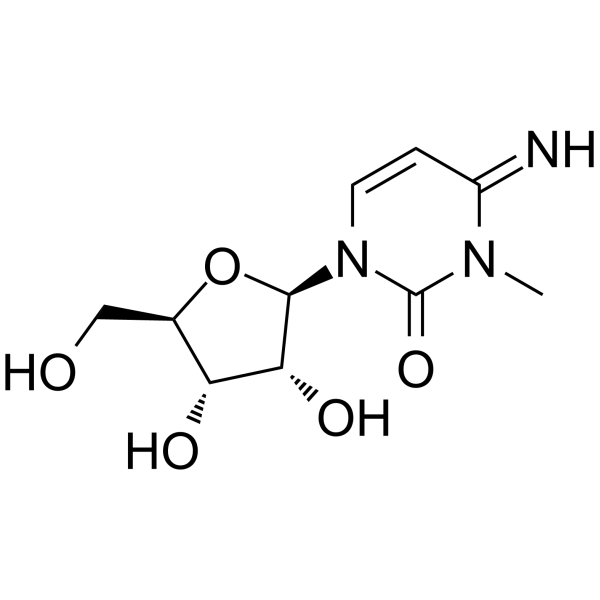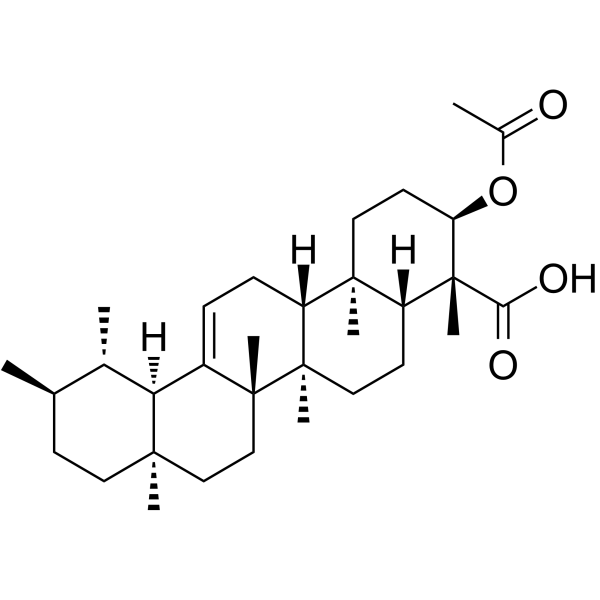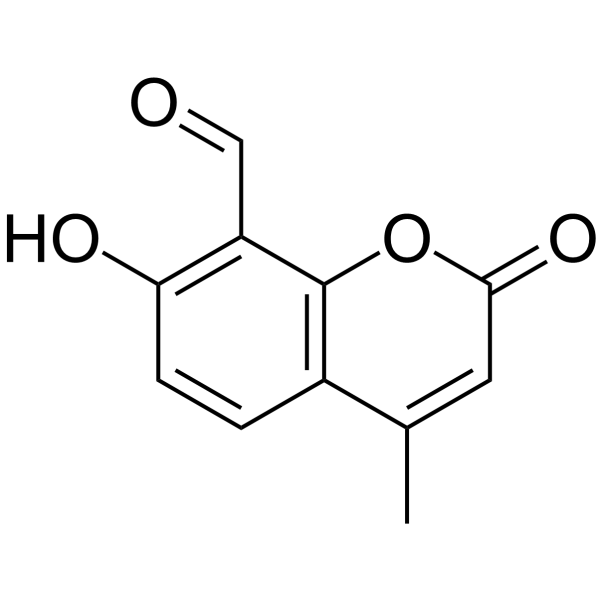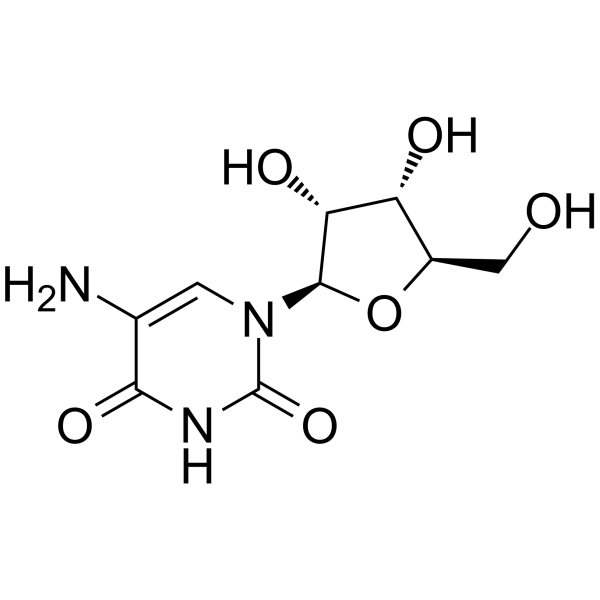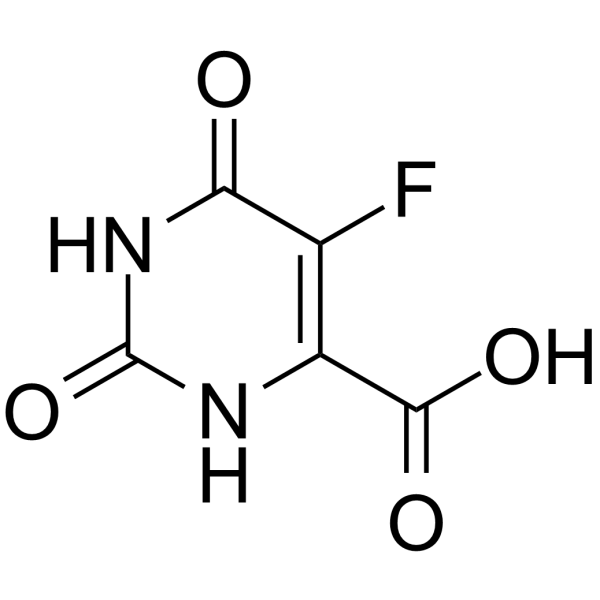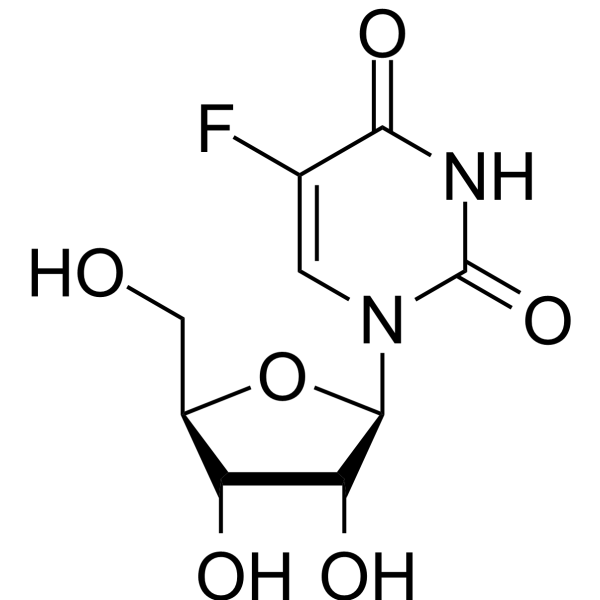|
BP12949
|
2'-Deoxy-2'-fluorocytidine
|
|
|
|
|
2'-Deoxy-2'-fluorocytidine is an nucleoside analog and inhibits of Crimean-Congo hemorrhagic fever virus (CCHFV) replication potently.
|
|
BP12950
|
Deoxycytidine triphosphate trisodium salt
|
|
|
|
|
2'-DEOXYCYTIDINE-5'-TRIPHOSPHATE TRISODI Oxidation contributes to antibiotic lethality in stationary-phase mycobacteria.
|
|
BP12951
|
2'-Deoxyuridine
|
|
|
|
|
2'-Deoxyuridine. An antimetabolite that is converted to deoxyuridine triphosphate during DNA synthesis. Laboratory suppression of deoxyuridine is used to diagnose megaloblastic anemias due to vitamin B12 and folate deficiencies.
|
|
BP12952
|
2'-Fluoro-2'-Deoxyadenosine
|
|
|
|
|
2'-Fluoro-2'-Deoxyadenosine is efficiently cleaved to the toxic 2-fluoroadenine (FAde) by Escherichia coli purine nucleoside phosphorylase (PNP). 2'-Fluoro-2'-Deoxyadenosine showed good in vivo activity against tumors expressing E. coli PNP. 2'-Fluoro-2'-Deoxyadenosine can be used to synthesize 2'-deoxy-2'-fluoromodified oligonucleotides that can hybridize to RNA.
|
|
BP12953
|
2-Fluoroadenine
|
|
|
|
|
2-Fluoroadenine has toxicity in nonproliferating and proliferating tumor cells. 2-Fluoroadenine can be used for anticancer studies.
|
|
BP12954
|
3,4-Dihydroxybenzylamine hydrobromide
|
|
|
|
|
3,4-Dihydroxybenzylamine hydrobromide inhibits DNA polymerase activity in melanoma cells and displays growth inhibitory activity in melanoma cell lines with varying degrees of tyrosinase activity.
|
|
BP12955
|
360A
|
|
|
|
|
360A is a stabilizing G-Quadruplex ligand, and also inhibits telomerase activity for telomerase in TRAP-G4 assay(IC50 : 300 nM).
|
|
BP12956
|
3-Deazauridine
|
|
|
|
|
3-Deazauridine is a structural analog of uridine that inhibits the biosynthesis of Cytidine-5'-Triphosphate by competitive inhibition of Cytidine Triphosphate synthetase which is considered to be the primary mode of action of this nucleoside analog.
|
|
BP12957
|
3'-Demethylnobiletin
|
|
|
|
|
3'-Demethylnobiletin has chemopreventive effects on colon carcinogenesis, it can significantly inhibit the growth of human colon cancer cells, cause cell-cycle arrest, induce apoptosis, and profoundly modulate signaling proteins related with cell proliferation and cell death.
|
|
BP12958
|
3MB-PP1
|
|
|
|
|
3MB-PP1 is an inhibitor of Polo-like kinase 1 (PLK1) and inhibits Leu93 Mutant Zipper-interacting protein kinase (Leu93-ZIPK) with an IC50 of 2 μM. 3MB-PP1 can be used in studies about cell division and hypha formation of Candida albicans.
|
|
BP12959
|
3-Methylcytidine
|
|
|
|
|
3-Methylcytidine as biomarkers of four different types of cancer: lung cancer, gastric cancer, colon cancer, and breast cancer.
|
|
BP12960
|
3-Acetyl-beta-boswellic acid
|
|
|
|
|
3-O-Acetyl-beta-boswellic acid has antitumor activity, it inhibits synthesis of DNA, RNA and protein in human leukemia HL-60 cells in a dose dependent manner with IC50 values ranging from 0.6 to 7.1 microM.
|
|
BP12961
|
4-Oxofenretinide
|
|
|
|
|
4-oxo-fenretinide, a recently identified fenretinide metabolite, induces marked G2-M cell cycle arrest and apoptosis.
|
|
BP12962
|
4μ8C
|
|
|
|
|
4μ8C(IC50=76 nM) is an effective and specific IRE1 Rnase inhibitor.
|
|
BP12963
|
5-Aminouridine
|
|
|
|
|
5-Aminouridine modifies nucleobases and is incorporated into the target DNA. 5-Aminouridine inhibits the growth of tumors, viruses, and fungi.
|
|
BP12964
|
5-Ethynyluridine
|
|
|
|
|
5-Ethynyluridine can be used to label newly synthesized RNA. This approach, named capture of the newly transcribed RNA interactome using click chemistry (RICK), systematically captures proteins bound to a wide range of RNAs, including nascent RNAs and traditionally neglected nonpolyadenylated RNAs.
|
|
BP12965
|
5-Fluoroorotic acid
|
|
|
|
|
5-Fluoroorotic acid is an inhibitor of thymidylate synthase. 5-Fluoroorotic is a selective agent in yeast molecular genetics.5-Fluoroorotic possesses a well-expressed anticandidal effect close to that of 5-fluorocytosine, as well as moderate antidermatophytal effects.
|
|
BP12966
|
5-Fluorouridine
|
|
|
|
|
5-fluorouridine is also known as FUrd, 5-Fluorouracil 1-beta-D-ribofuranoside, 5-Fur, or 5-Fluoro-uridine. 5-fluorouridine is a solid. This compound belongs to the pyrimidine nucleosides and analogues. These are compounds comprising a pyrimidine base attached to a sugar. 5-fluorouridine is known to target uridine phosphorylase. FUrd is often used in chemical and biochemical comparison studies with fluorouracil and thymine analogs.
|
|
BP12967
|
5-Hydroxy-2'-deoxyuridine
|
|
|
|
|
5-Hydroxy-2'-deoxyuridine is a major oxidation product of 2'-Deoxycytidine and can be incorporated into DNA in vitro.
|
|
BP12968
|
5-Iodo-indirubin-3'-monoxime
|
|
|
|
|
5-Iodo-indirubin-3'-monoxime is a potent GSK-3β, CDK5/P25 and CDK1/cyclin B inhibitor, competing with ATP for binding to the catalytic site of the kinase (IC50s: 9, 20 and 25 nM).
|

